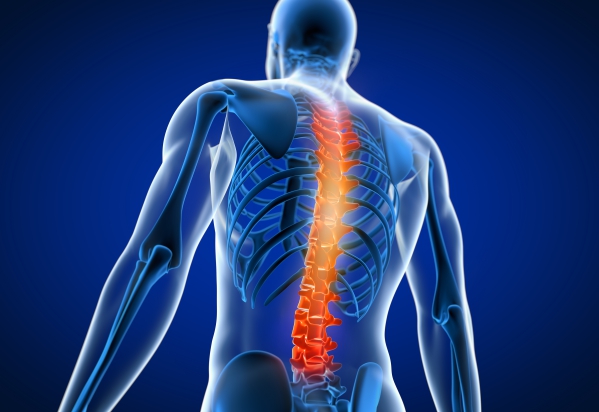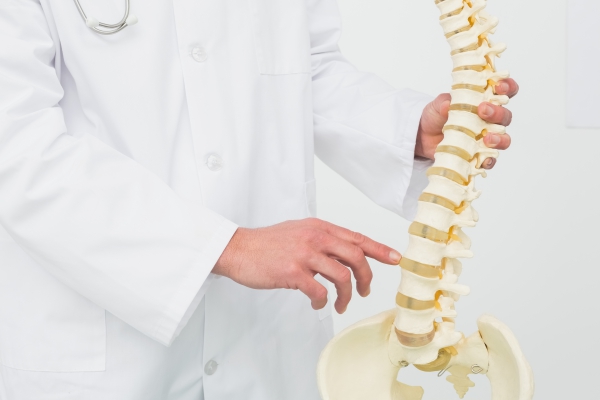Ankylosing spondylitis, Chronic inflammation, Fusion of vertebrae, Bamboo spine
Description : Ankylosing spondylitis (AS) is a chronic inflammation that affects the bones in your spine
Article Details :
What is Ankylosing spondylitis?
Ankylosing spondylitis (AS) is a chronic inflammation that affects the bones in your spine (vertebrae). This leads to the fusion of those vertebrae causing your spine to bend too much resulting in a hunched-forward posture. The most common complaint is low back pain. This condition affects most commonly the sacroiliac joint which is the joint located just above the hips between the sacrum and the ilium bones of the pelvis.
This condition is associated with the gene HLA-B27 and 1-2% of people having this gene develops AS. In addition, having a parent or sibling being affected by this condition increases your risk of developing AS by 15-20%. AS usually affects people above the age of 40 years and affects men more often than women. Furthermore, whites are more commonly affected by AS than African Americans.
Unfortunately, there is no cure for AS. However, there are treatments available to reduce your symptoms and slow down the disease progression.
What are the causes and risk factors of ankylosing spondylitis?
The exact cause of AS is still unknown. However, there are some factors which may increase your risk of developing AS and these include:
- Family history: Having a parent or sibling affected by AS increases your risk of developing the condition by 15-20%.
- Having the gene HLA-B27: 1-2% of people who has the HLA-B27 gene develops AS over time.
- Age: AS usually affects people above the age of 40 years.
- Sex: Men are more commonly affected by AS than women.
- Race: White are more commonly affected by AS than African Americans.
What are the signs and symptoms of ankylosing spondylitis?
The signs and symptoms of AS include:
- Insidious onset of low back pain
- Stiffness of the lower spine
- The pain or stiffness is more pronounced in the morning or with inactivity
- The pain and stiffness is present for more than 3 months which is not relieved by rest.
- Difficulty to breathe as the chest cannot expand properly.
- A stooped or hunched-forward posture
- Inflammation of other joints of the hands, arms or feet.
Other than joints, AS may affect other parts of the body causing:
- Inflammation of the eye, also known as uveitis.
- Cardiovascular problems.
- Kidney problems.
- Lung diseases
- Neurologic diseases
- Gastrointestinal (GI) diseases. The GI tract runs from the mouth to the anus.
AS can resemble other diseases including:
- Congenital spinal deformity
- Degenerative disk disease
- Herniated nucleus pulposus
- Kyphosis
- Lower cervical spine dislocations or fractures
- Lumbar disk disease
- Osteoarthritis
- Psoriatic arthritis
- Reactive arthritis
- Spinal stenosis

Making a diagnosis
To make a diagnosis, your doctor will take a detailed history from you to know more about your symptoms. After the history taking, your doctor will perform a thorough physical examination to look for signs of ankylosing spondylitis. He/she may ask you to bend in different directions to assess the range of motion of your spine. In addition, your doctor will ask you to take a deep breath in order to assess your chest expansion. To confirm the diagnosis, your doctor may order some tests and these include:
- Complete blood count (CBC): A CBC is done as 15% of people affected by AS have anaemia of chronic disease.
- Erythrocyte sedimentation rate (ESR): ESR is a marker of inflammation in the body and is usually elevated in AS.
- C-reactive protein: C-reactive protein is another marker of inflammation in the body and is usually elevated in AS.
- Alkaline phosphatase (ALP) level: 50% of people affected by AS have an elevated ALP level which indicates active vertebral fusion taking place.
- Plain radiography: X-ray of the pelvis and spine, including the cervical (neck) and lumbar spine (spine just above the hips) will show inflammatory changes which is very important in the diagnosis of AS. The lumbar spine is usually affect first and then progresses to the cervical spine. The hips or shoulders are often affected as well which will further decrease the mobility of the person.
- Computed Tomography (CT) scan: CT scans are useful to provide your doctor with a more accurate imaging of the bones. However, it is less often used than plain radiography as it is expensive.
- Magnetic Resonance Imaging (MRI) scan: MRI scan are useful to detect early inflammatory changes in the bones which is not detected by plain radiography or CT scans. MRI scans can also assess whether the spinal cord is being affected or not. However, it is not routinely done due to its high cost.




